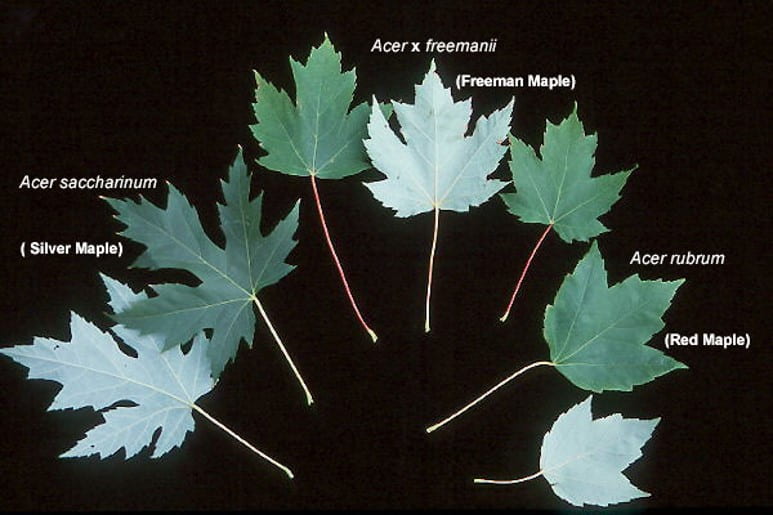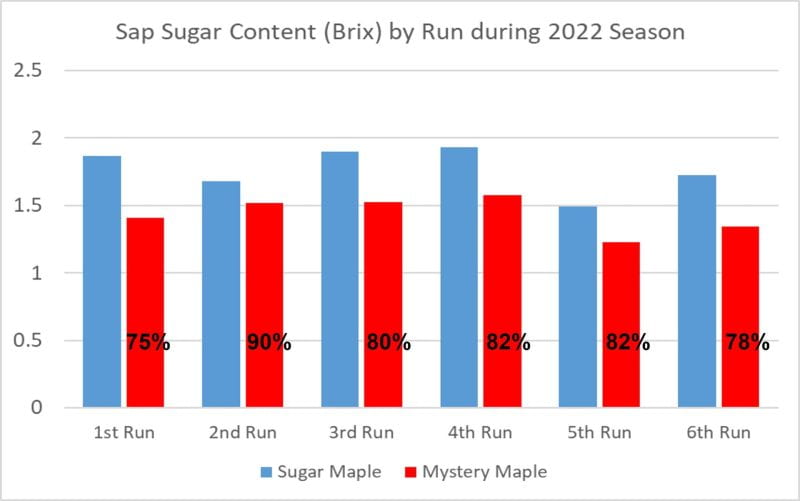Ohio Maple Days 2022 did not disappoint. The food was fantastic, the vendor room crowded, and the presenters shared a wealth of knowledge of expertise across a wide range of subjects. I was among those speakers, and Abby van den Berg and I presented a pair of talks that focused on those other maples. Abby’s perspective from Vermont and focused mainly on pure red maples (come back for Part II next week for those highlights), and my perspective sharing from the basis of our ACER-funded research on Acer freemanii, Freeman’s maple, or just “rilver” for short. Before we get into it, be sure to mark your calendars for next year’s conference December 8th and 9th!
Let’s try this recap in a series of short statements.
1) Sugar maples are the gold standard for maple syrup production – there is no disputing that.

2) But other maple species probably deserve more love than they have traditionally been given.
3) Mounting pressures from climate change, forest pests, and a host of other reasons make other maple species more important to consider than ever before.
4) Because of the above, it makes sense to learn more about other maple species production potential.
5) We thought we had simple (red x silver) hybrid maples in the OSU Mansfield research sugarbush where we have our single-tree research stations.
6) We thought wrong. Turns out the hybrid maples are more mysterious than that – stay tuned for further genetic testing!

7) Regardless of what other variety of maple we are working with it still made sense to compare their production potential and other characteristics to sugar maple.
8) Research began in the 2021 as we pulled over 20 sugar maples and 50 of the mystery maples into single-tree sap collection chambers that measured daily performance.

9) Research techs and research PI quickly learned that maple research can be icy cold!
10) The 2021 season was historically bad and we had 5 roller coaster runs total.

11) During the 2021 season, our mystery maples were not as sweet overall as sugar maples, however, the mystery maples held a more stable Brix level from the start of the season to finish.

12) Mystery maples lost ground to sugar maples in terms of sap production volume as the season got later and later.

13) Surprised yet? Maybe not. But consider this – the best half of our mystery maples OUTPERFORMED the worst half of our sugar maples in terms of syrup production potential. Would that also hold true for 2022?
14) Fast forward 11 months to yet another choppy, wild, and erratic 2022 sap season. When will we have another “normal” sap season?

15) Note to self, might have to add another 10 degrees to y-axis of Sap Run graph in 2023. I surely hope not!!
16) More in line with studies elsewhere, our 2022 mystery maple trial trees matched or outpaced sugar maple’s sap volume production up until the final sap run of the year.
17) Brix consistently tracked 0.2-0.4 points below for mystery maples as compared to sugar maples.

18) Ultimately, we’re excited and hopeful for a “normal” 2023 season to collect data from a more representatively average season.
19) In the interim, both years suggest that mystery maples are not to be overlooked especially if you are an operator using reverse osmosis in your sugarhouse looking to expand your number of taps.
20) Stay tuned for 2023 – our 3rd year of ACER-funded research investigating alternative maple species production potential.













